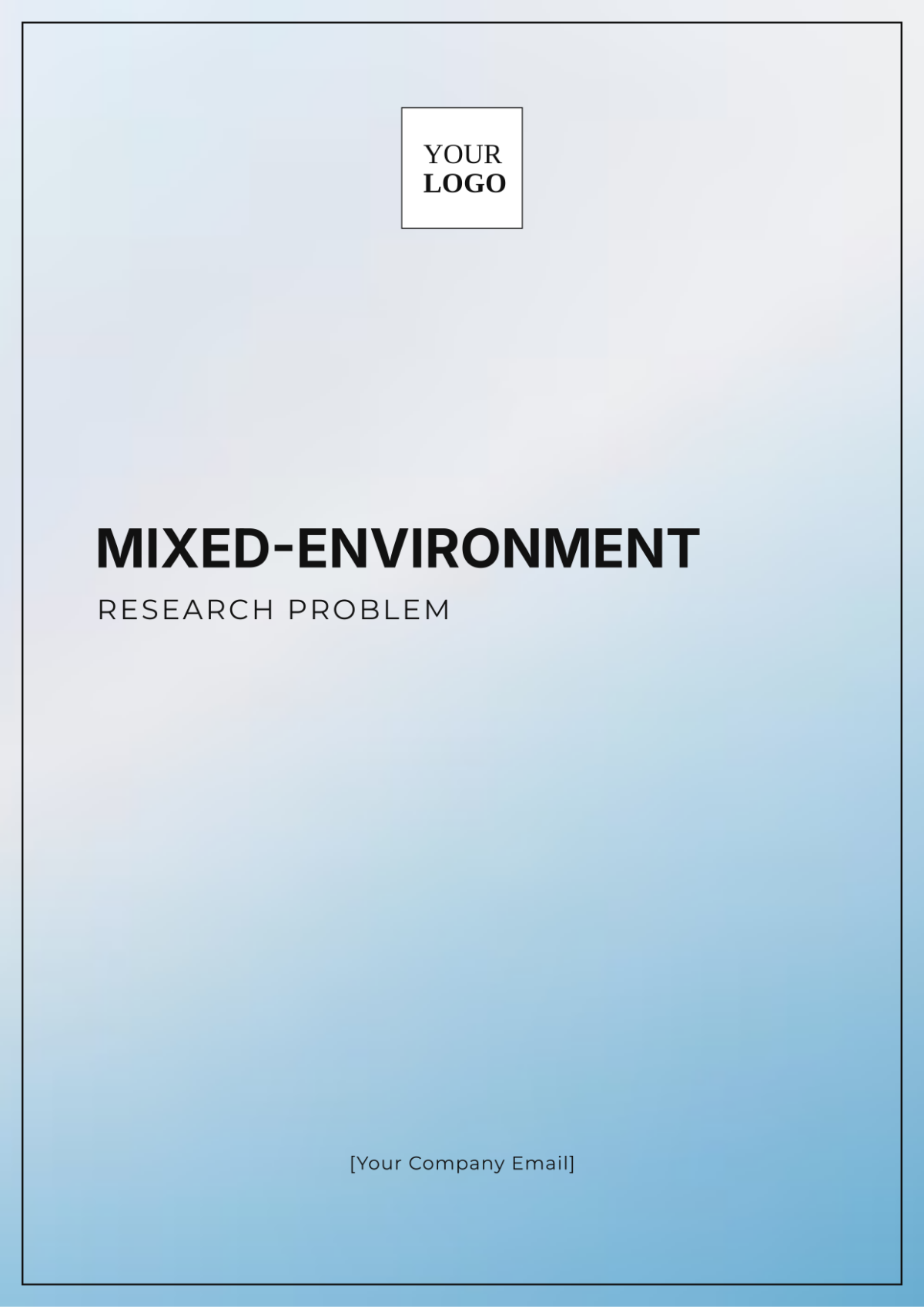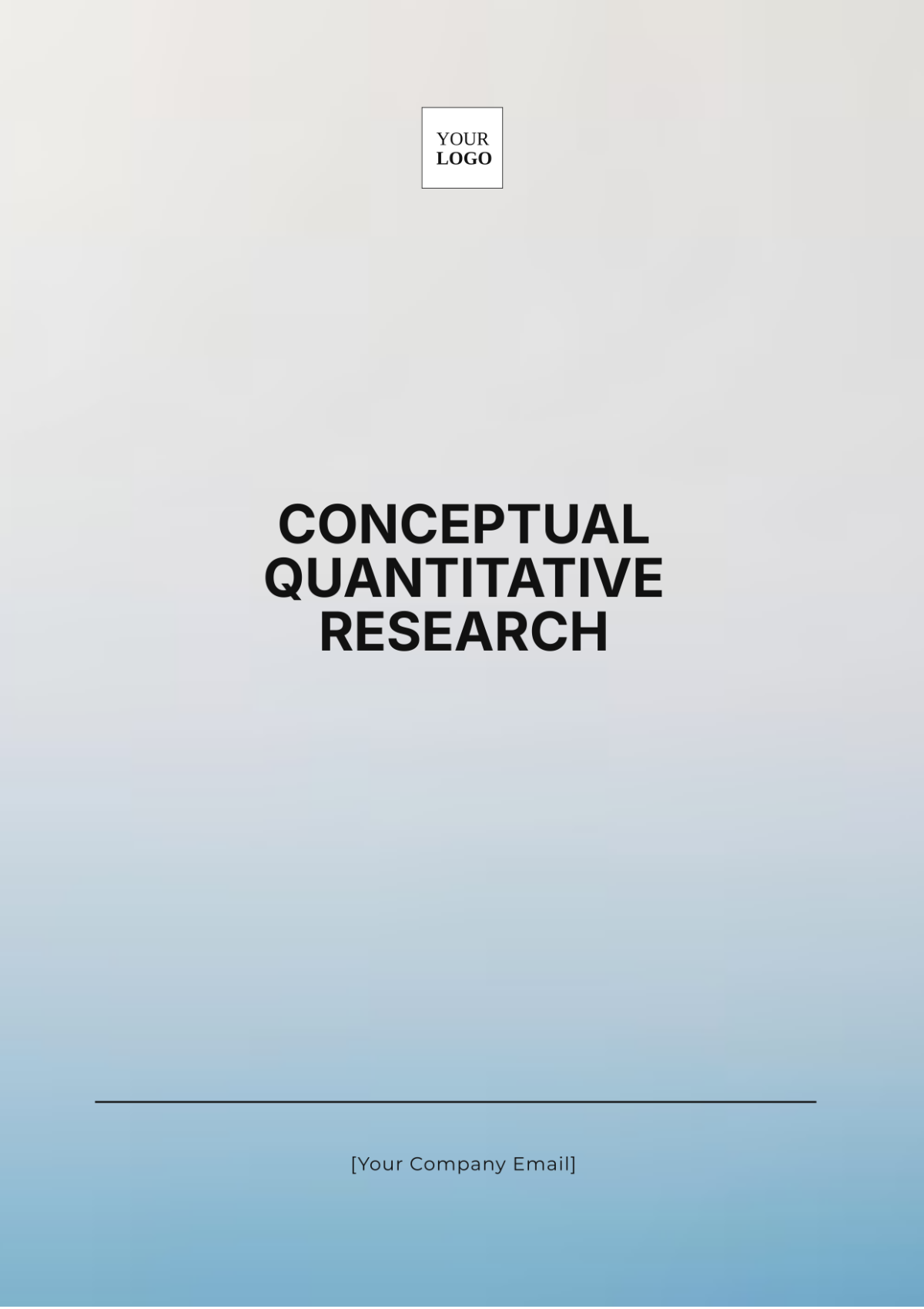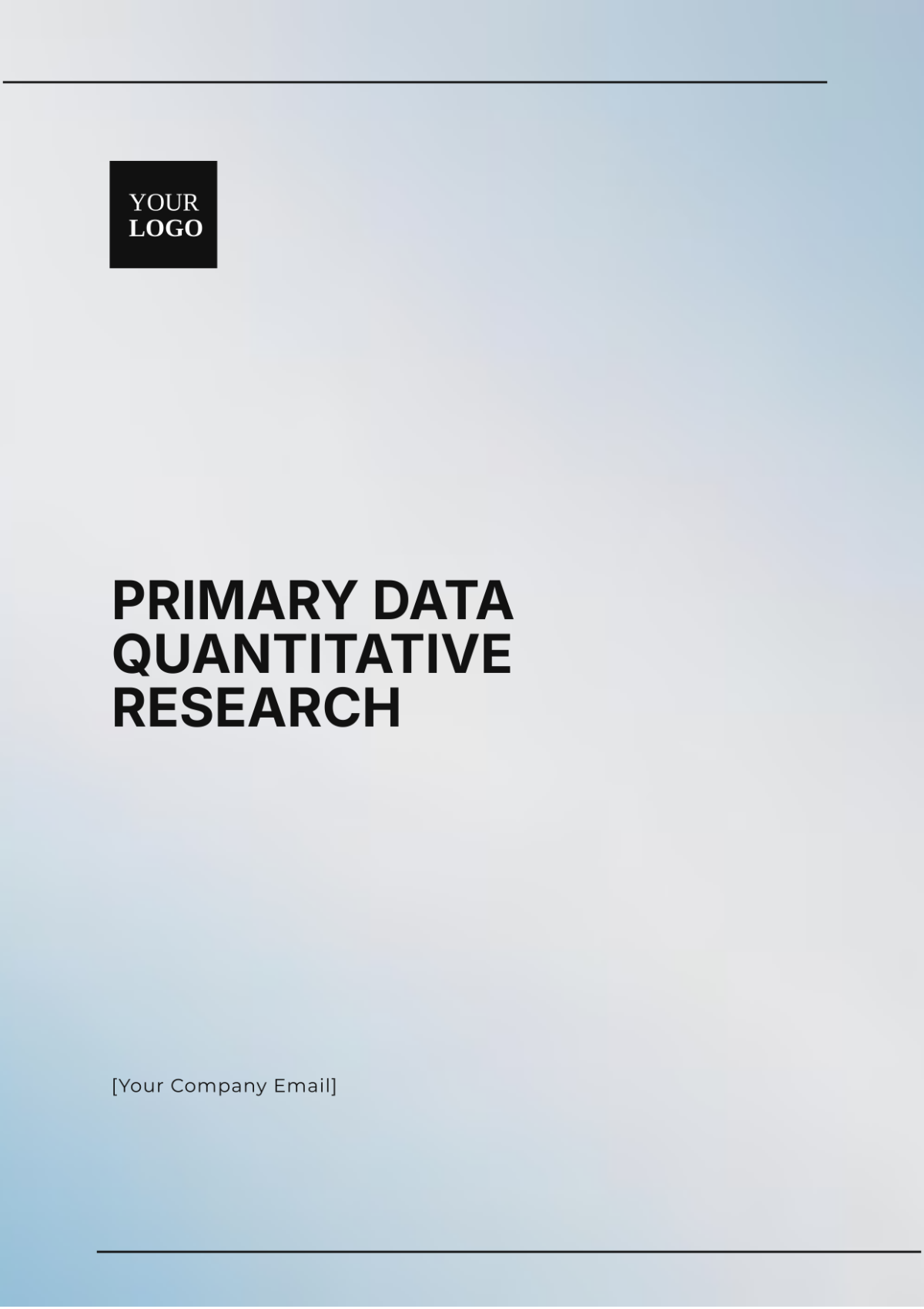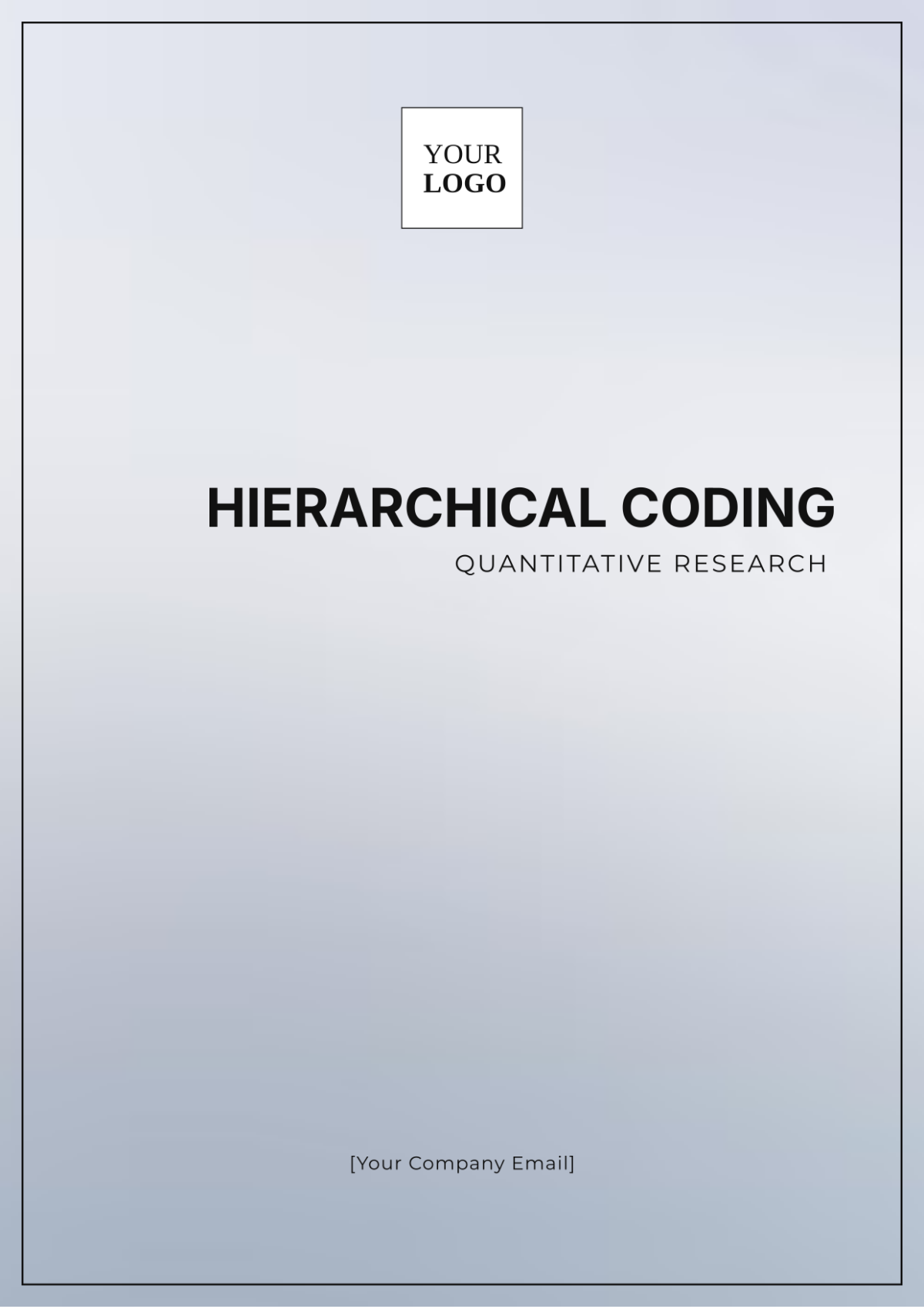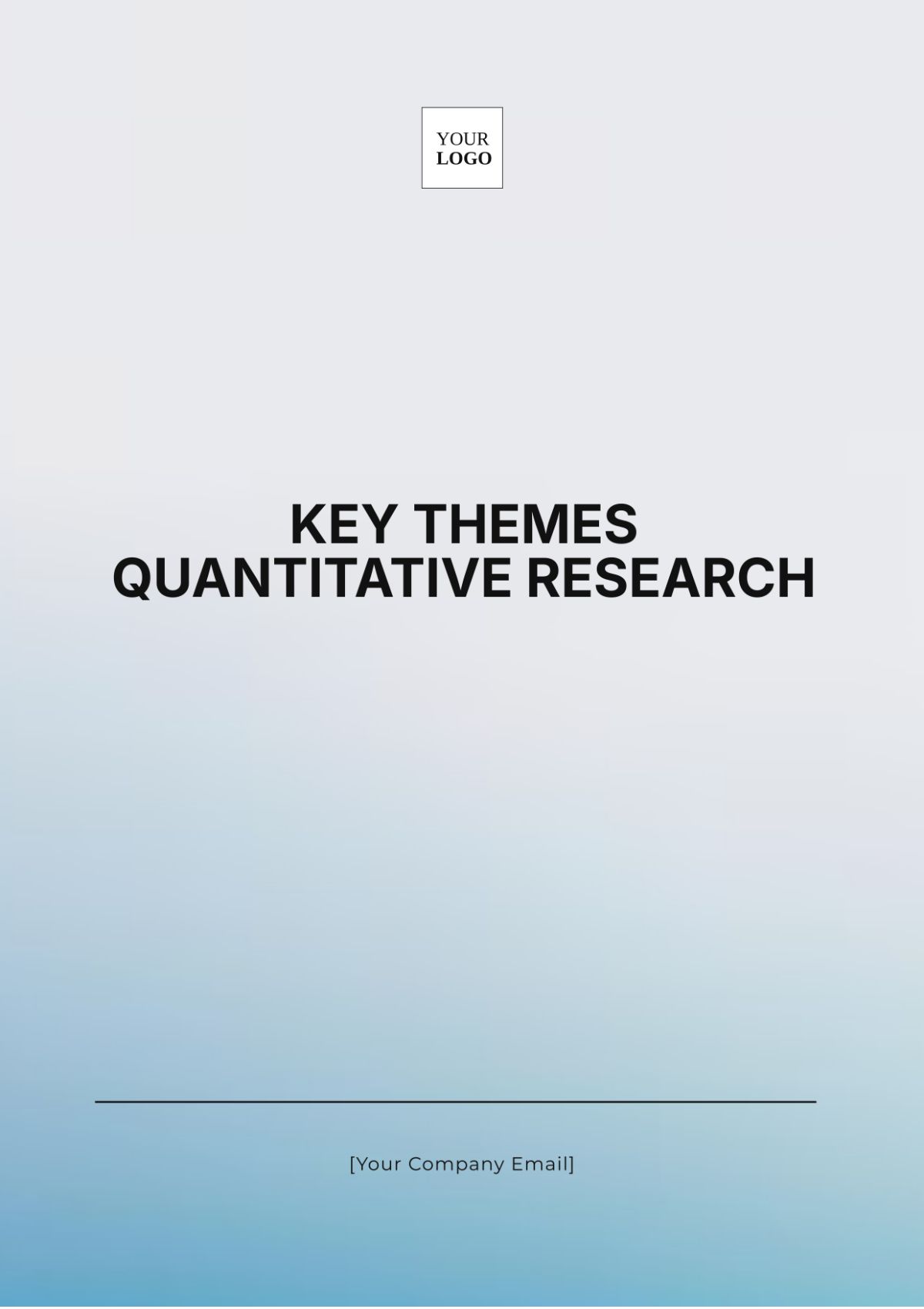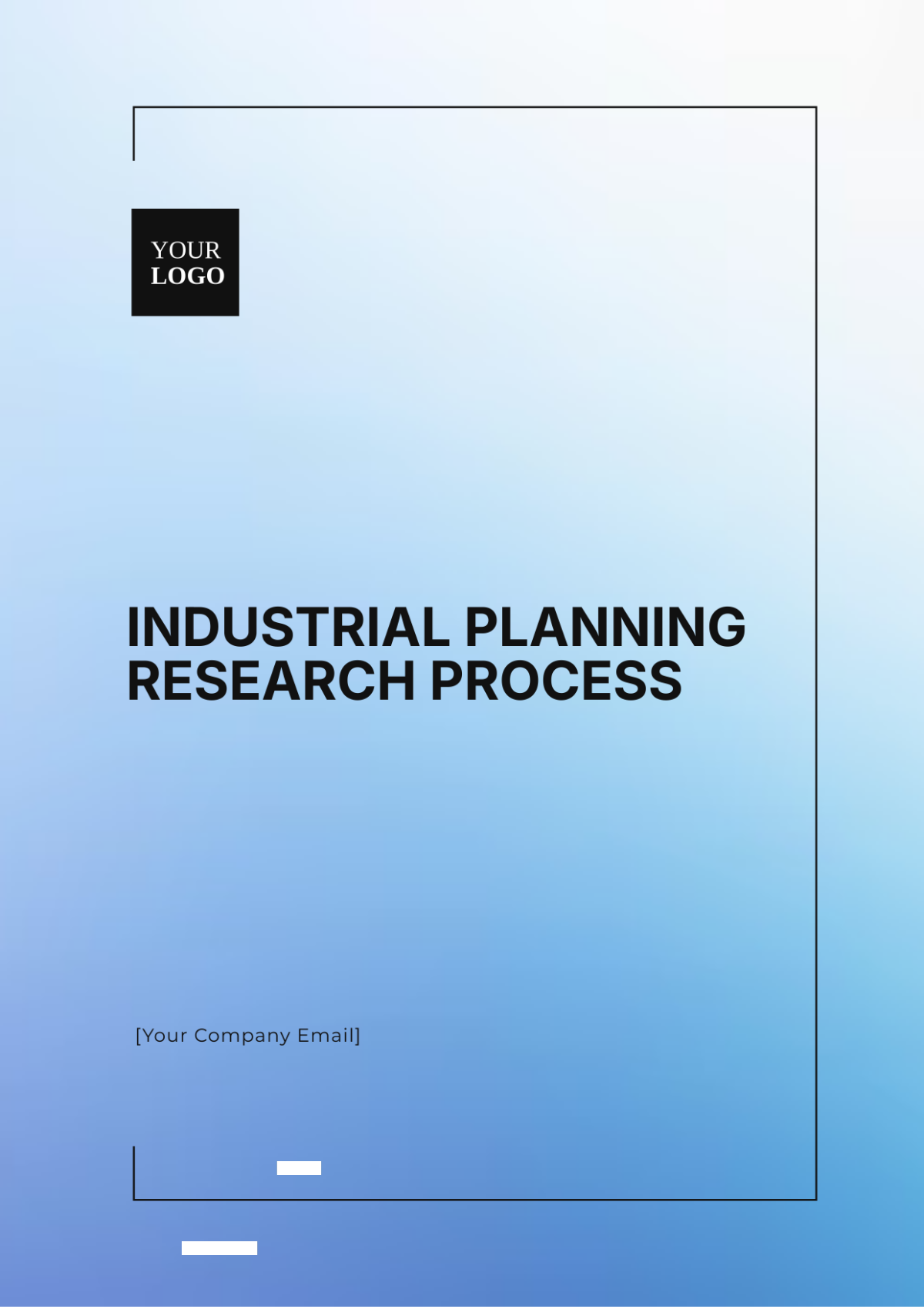Quantitative Research Guide
I. Introduction
A. Overview
This guide serves as a comprehensive resource for conducting quantitative research. It is designed to assist [TARGET AUDIENCE] in understanding the principles, methods, and applications of quantitative research in various fields.
B. Importance of Quantitative Research
Explanation of the significance of quantitative research in [FIELD/INDUSTRY].
Illustration of how quantitative data analysis contributes to [SPECIFIC APPLICATION/OUTCOME].
II. Profile Information
A. Institution Information
The following details provide pertinent information about [YOUR INSTITUTION/ORGANIZATION], ensuring accessibility and clarity for all stakeholders:
Institution Name: [YOUR INSTITUTION/ORGANIZATION NAME]
Institution Address: [YOUR INSTITUTION/ORGANIZATION ADDRESS]
Institution Website: [YOUR INSTITUTION/ORGANIZATION WEBSITE]
Institution Email: [YOUR INSTITUTION/ORGANIZATION EMAIL]
B. Brand Mission and Goals
At [YOUR INSTITUTION/ORGANIZATION], our mission is to [MISSION STATEMENT]. Our goals include [GOALS].
III. Key Concepts in Quantitative Research
A. Definition of Quantitative Research
Explanation of quantitative research as a systematic investigation that quantifies phenomena through numerical data.
Differentiation from qualitative research methodologies.
B. Research Design
Overview of research design types [RESEARCH DESIGNS].
Considerations for selecting an appropriate research design based on research questions and objectives.
C. Sampling Methods
Description of probability and non-probability sampling techniques.
Explanation of sampling strategies such as [SAMPLING TECHNIQUES].
D. Data Collection Instruments
Introduction to commonly used data collection tools [DATA COLLECTION INSTRUMENTS].
Considerations for designing effective data collection instruments, including reliability and validity.
E. Data Analysis Techniques
Overview of statistical methods for analyzing quantitative data [STATISTICAL METHODS].
Explanation of parametric and non-parametric tests and their applications.
IV. Conducting Quantitative Research
A. Formulating Research Questions and Hypotheses
Guidelines for developing clear, focused research questions and hypotheses.
Examples of well-structured research questions and hypotheses.
B. Designing Research Studies
Steps involved in designing a quantitative research study, including protocol development, participant recruitment, and data collection procedures.
Importance of ethical considerations in research design and participant recruitment.
C. Data Collection
Best practices for administering data collection instruments.
Strategies for maximizing response rates and minimizing non-response bias.
D. Data Analysis
Step-by-step guide to data analysis, including data cleaning, coding, and statistical analysis.
Interpretation of statistical findings and drawing conclusions.
V. Reporting and Presenting Results
A. Writing Research Reports
Structure and components of a research report (abstract, introduction, methods, results, discussion).
Guidelines for writing clear, concise, and logically organized research reports.
B. Creating Visualizations
Tips for creating effective data visualizations (graphs, charts, tables).
Selection of appropriate visualization types based on data characteristics and research objectives.
VI. Resources and Tools
A. Statistical Software
Overview of popular statistical software packages [STATISTICAL SOFTWARE].
Tutorials and resources for using statistical software for data analysis.
B. Research Databases
Introduction to databases for accessing quantitative research literature [RESEARCH DATABASES].
Tips for conducting effective literature searches and accessing full-text articles.
VII. Ethical Considerations
A. Research Ethics
Discussion of ethical principles in quantitative research (informed consent, confidentiality, beneficence).
Considerations for ethical approval and oversight of research projects.
B. Data Management and Security
Guidelines for secure storage and handling of research data.
Protection of participant confidentiality and data integrity.
VIII. Conclusion
A. Recap of Key Points
Summary of key concepts and methods covered in the guide.
Reinforcement of the importance of quantitative research in [FIELD/INDUSTRY].
B. Further Learning Opportunities
Suggestions for additional resources, courses, and workshops for furthering knowledge and skills in quantitative research.








